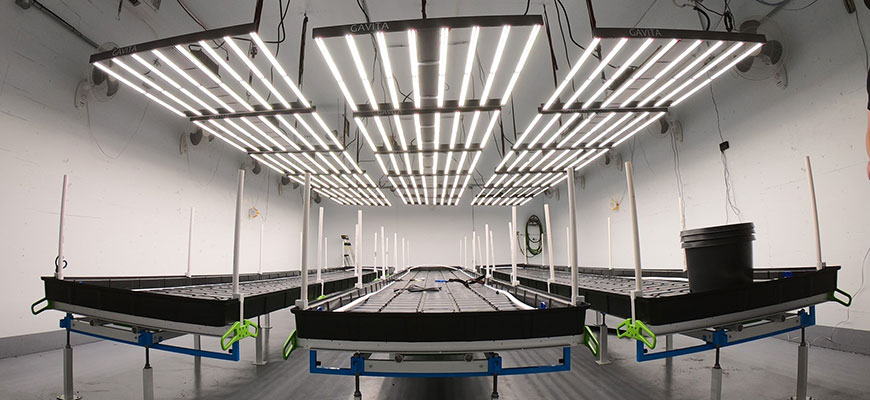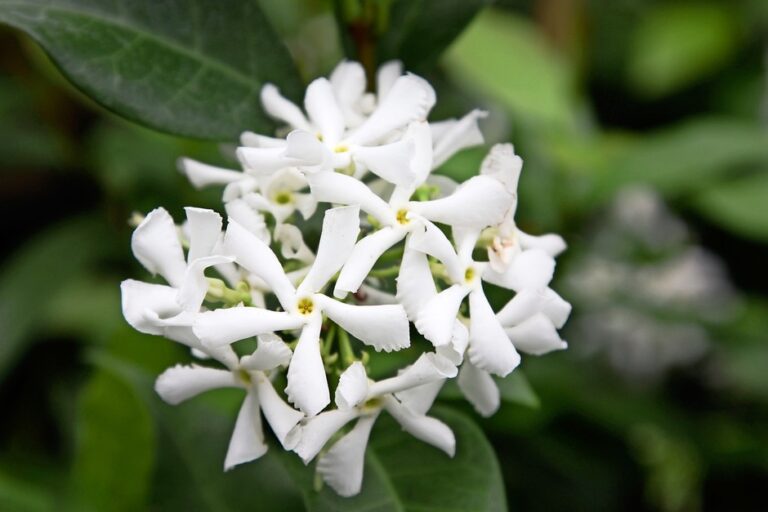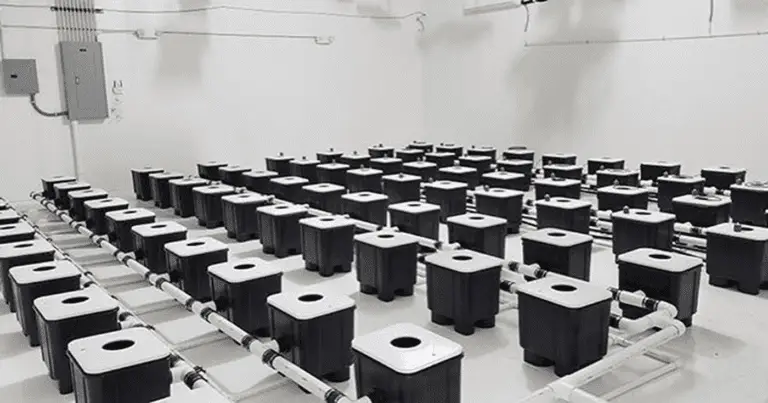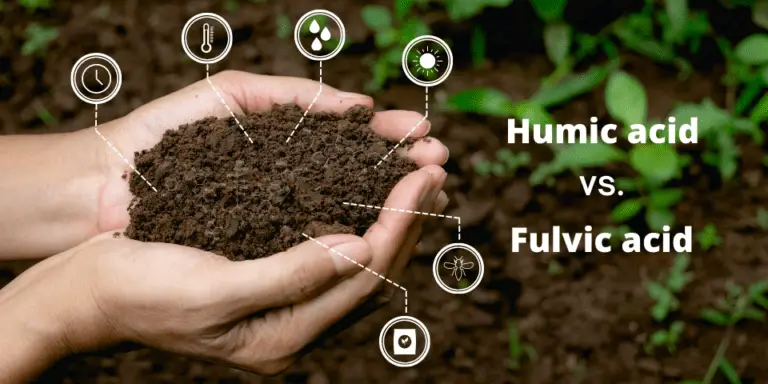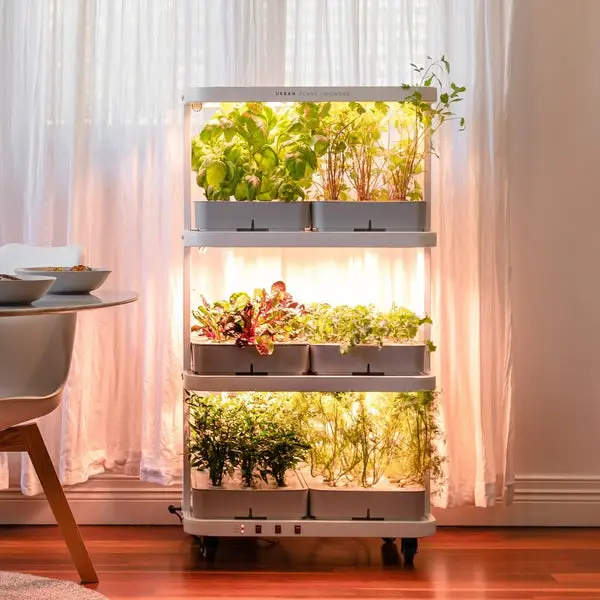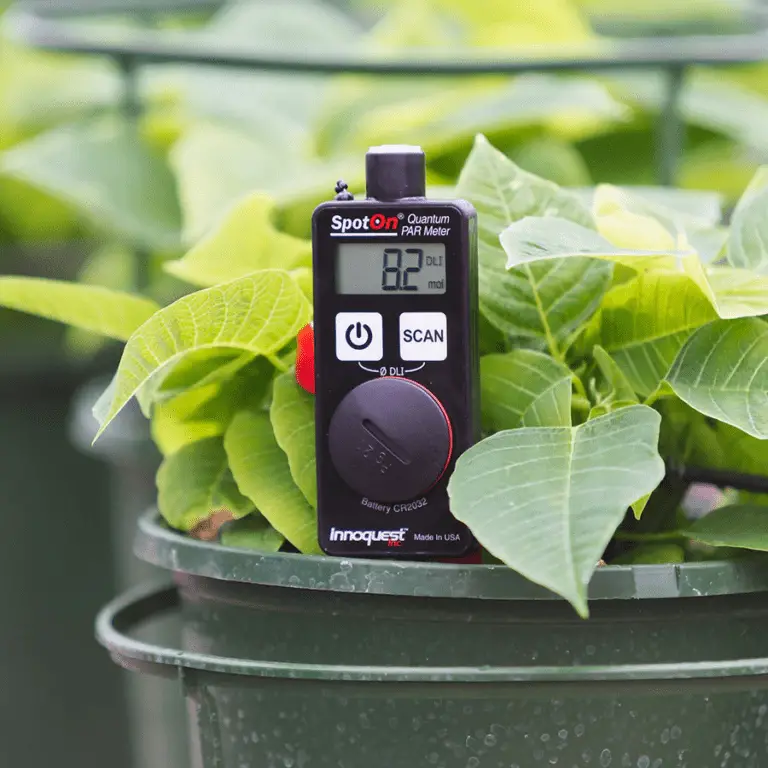Best LED Grow Lights: A Review of the Top Products for Indoor Growing
Table of Contents
Understanding LED Grow Lights: An Overview of Indoor Growing
Indoor gardening has become increasingly popular among enthusiasts, thanks to the advancements in technology that have made it possible to grow plants year-round without the need for natural sunlight. One key component that has revolutionized indoor gardening is the LED grow light. These lights emit specific wavelengths of light that are essential for plants’ growth and development, making them a preferred choice for many indoor growers.
LED grow lights are designed to provide the right amount and type of light energy that plants need in each growth stage. Unlike traditional lighting options such as fluorescent or incandescent bulbs, LED lights are highly efficient and produce less heat. This not only reduces the risk of plant damage from excessive heat but also saves energy, making them a more cost-effective choice in the long run.
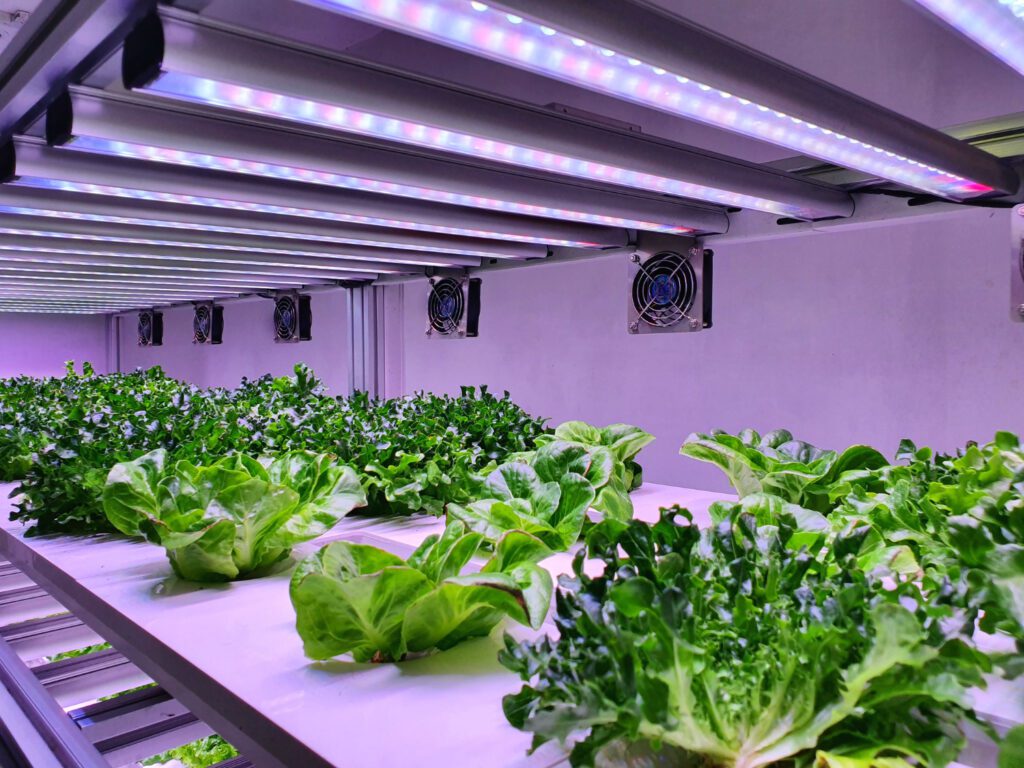
Moreover, LED grow lights can be customized to emit different spectrums of light, allowing growers to tailor the lighting conditions to meet the specific needs of their plants. Whether it’s optimizing vegetative growth, promoting flowering, or increasing fruit production, LED grow lights offer the flexibility required for successful indoor gardening. Additionally, these lights have a longer lifespan compared to traditional lighting options, reducing maintenance costs and providing growers with a reliable and durable lighting solution.
With their efficiency, customization options, and long lifespan, LED grow lights have undoubtedly transformed the world of indoor gardening. In the following sections of this article, we will delve deeper into the benefits of using LED grow lights, factors to consider before making a purchase, different types of LED grow lights available, and how to choose the right one for your indoor garden. So, whether you’re a seasoned horticulturist or a novice green thumb, read on to discover the fascinating world of LED grow lights and maximize the potential of your indoor garden.
Benefits of Using LED Grow Lights for Indoor Plants
LED grow lights have become increasingly popular for indoor gardening due to the numerous benefits they offer. One of the most notable advantages is energy efficiency. LED lights are designed to emit light in specific wavelengths, resulting in higher energy conversion rates. Compared to traditional lighting sources such as incandescent or fluorescent lights, LED grow lights consume less electricity while producing the same or even greater light output. This not only reduces energy costs but also minimizes the overall environmental impact of indoor gardening.
Another key benefit of using LED grow lights is their ability to provide plants with the optimal light spectrum. LED lights can be customized to emit different wavelengths of light, including those specifically beneficial for plant growth and development. For example, blue light promotes leaf growth, while red light stimulates flowering and fruiting. By adjusting the light spectrum, indoor gardeners can mimic natural sunlight conditions and optimize plant growth at different stages. LED grow lights also produce less heat compared to other lighting options, reducing the risk of plant damage and allowing for closer light placement to maximize light absorption.
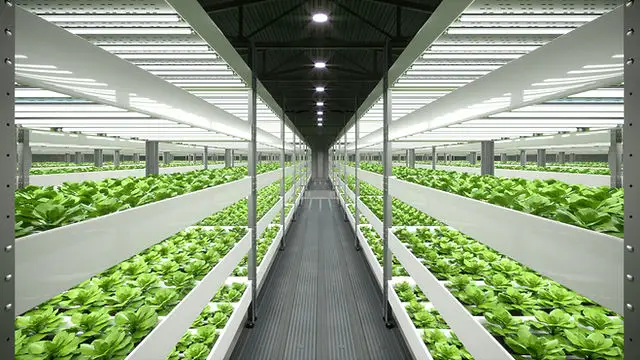
Moreover, LED grow lights have a longer lifespan compared to traditional lighting sources. On average, LED lights can last up to 50,000 hours, significantly surpassing the lifespan of incandescent or fluorescent lights. This extended lifespan helps to reduce the maintenance and replacement costs associated with indoor gardening. LED grow lights also emit less heat, reducing the need for additional cooling systems and making them more suitable for small indoor spaces.
In conclusion, the benefits of using LED grow lights for indoor plants are numerous. With their energy efficiency, customizable light spectrum, and extended lifespan, LED lights provide an ideal lighting solution for indoor gardening. Whether you are a seasoned gardener or a beginner, incorporating LED grow lights into your indoor setup can significantly enhance plant growth and productivity.
Factors to Consider Before Buying LED Grow Lights
When considering purchasing LED grow lights for your indoor garden, there are several important factors to keep in mind. First and foremost, think about the size of your garden and the specific plants you will be growing. Different plants have varying light requirements, so it’s crucial to choose LED grow lights with the appropriate spectrum and intensity to meet your plants’ needs.
Another key factor to consider is the coverage and uniformity of the light provided by the LED grow lights. Ideally, you want the light to evenly reach all parts of your plants, ensuring healthy growth and avoiding any shading or uneven development. This can be achieved by selecting LED grow lights with a wide beam angle and a design that promotes uniform light distribution. Additionally, understanding the hanging height and placement of the lights is important for maximizing their effectiveness and achieving optimal coverage for your plants.
Exploring Different Types of LED Grow Lights
When it comes to exploring different types of LED grow lights for indoor gardening, there are several options available on the market. Each type offers its own unique features and benefits, catering to the specific needs of different plants and growth stages.
One popular type of LED grow light is the full spectrum light. These lights emit a balanced combination of red and blue wavelengths, mimicking natural sunlight and promoting healthy and robust plant growth. Full spectrum LED lights are ideal for all stages of plant development, from seedling to flowering.
Another type worth considering is the bloom or flowering LED light. These lights prioritize the red and orange wavelengths, which are crucial for promoting flower and fruit production. Bloom LED lights are particularly useful when growing flowering plants or when you want to encourage your plants to enter the blooming phase.
Additionally, there are LED lights specifically designed for vegetative growth. These lights emphasize the blue wavelengths, which are essential for promoting leaf and stem development. Veg LED lights are commonly used during the vegetative stage of plant growth, helping plants establish a strong foundation before transitioning to the flowering stage.
While full spectrum, bloom, and veg lights are the most common types of LED grow lights, there are other specialized options available as well. Some LED lights offer adjustable spectrum settings, allowing you to customize the wavelengths based on your plant’s specific needs. Others are designed for specific plant species, such as herbs or succulents, providing tailored light spectrums for optimal growth.
When choosing the right LED grow lights for your indoor garden, it’s important to consider the specific requirements of your plants, the desired growth stages, and your budget. Taking the time to research and evaluate different types of LED grow lights will ensure you find the best fit for your indoor gardening needs.
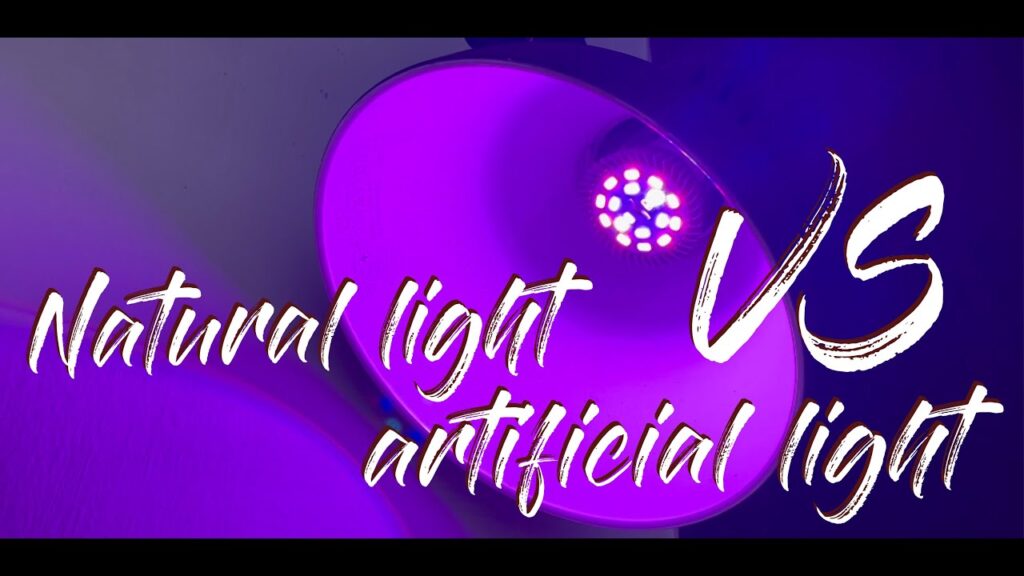
How to Choose the Right LED Grow Lights for Your Indoor Garden
Choosing the right LED grow lights for your indoor garden is crucial to the success of your plants. With the wide variety of options available in the market, it can be overwhelming to make a decision. However, by considering a few key factors, you can ensure that you choose the most suitable LED grow lights for your specific needs.
First and foremost, you need to evaluate the light requirements of your plants. Different plants have different lighting needs, and understanding these requirements will help you determine the appropriate spectrum and intensity of the grow lights you need. Some plants thrive under full spectrum lights, while others may require specific wavelengths for optimal growth.
Next, consider the size of your indoor garden and the coverage area of the LED grow lights. It is important to choose lights that can adequately cover the entire garden, providing uniform light distribution. Additionally, pay attention to the hanging height of the lights to ensure that they are positioned at the optimal distance from the plants.
Another important factor to consider is the wattage and energy efficiency of the LED grow lights. Higher wattage lights generally provide more intense illumination, but they may also consume more energy. Look for lights that strike a balance between power output and energy consumption, as this will help you save on electricity bills while still providing your plants with the necessary light intensity.
When choosing LED grow lights for your indoor garden, it is also helpful to read user reviews and compare different brands and models. Real user experiences can give you valuable insights into the performance and reliability of specific products. Additionally, reputable brands often offer warranties and customer support, which can be important considerations for long-term investment in your indoor garden.
In the end, choosing the right LED grow lights for your indoor garden requires careful consideration of various factors, including plant light requirements, coverage area, wattage, energy efficiency, and user feedback. By taking the time to research and evaluate your options, you can make an informed decision that will contribute to the health and productivity of your plants.
Evaluating the Spectrum and Intensity of LED Grow Lights
Evaluating the spectrum and intensity of LED grow lights is crucial for achieving optimal growth and yield in indoor gardening. The spectrum refers to the range of light wavelengths emitted by the LED lights, which play a significant role in the plant’s photosynthesis process. Different wavelengths have varying effects on plant development, such as promoting leaf growth, flowering, or fruiting.
To evaluate the spectrum, it is important to consider the specific light requirements of the plants you are growing. Different plant species have different light requirements at different stages of growth. For instance, leafy greens like lettuce and spinach thrive under blue light, which promotes vegetative growth, while flowering plants like tomatoes and peppers benefit from a mix of red and blue light to support flowering and fruiting.
| Criteria | Description |
|---|---|
| Spectrum Range | Evaluate the spectrum range of the LED grow light, ensuring it covers the full photosynthetic spectrum (400-700 nm) for optimal plant growth. |
| Light Distribution | Consider the even distribution of light across the canopy to ensure all plants receive adequate light for uniform growth. |
| Peak Wavelengths | Look for LED lights that emphasize blue light (400-500 nm) for vegetative growth and red light (600-700 nm) for flowering and fruiting stages. |
| Full Spectrum vs. Targeted | Decide whether a full-spectrum LED or a targeted spectrum for specific growth stages is more suitable for your plants and growth goals. |
| Intensity (PAR) | Measure the light intensity in terms of Photosynthetically Active Radiation (PAR) to ensure it meets the requirements of your plants at different growth stages. |
| Light Output (Lumens) | Consider the overall brightness of the LED light, measured in lumens, but keep in mind that lumens may not accurately represent plant growth potential. |
| Wattage | Check the power consumption (wattage) of the LED grow light and its efficiency in converting energy into usable light for plants. |
| Adjustable Settings | Look for lights with adjustable intensity and spectrum settings, allowing you to customize the light conditions based on plant growth stages. |
| Heat Emission | Assess the heat produced by the LED grow light to prevent overheating and ensure proper temperature control in the growing environment. |
| Lifespan and Warranty | Consider the lifespan of the LED grow light and the warranty provided by the manufacturer, as these factors impact the long-term cost-effectiveness. |
Along with the spectrum, the intensity of LED grow lights is equally important. Intensity refers to the brightness or strength of the light emitted by the LEDs. Plants require an adequate amount of light intensity to carry out photosynthesis effectively. Insufficient light intensity can lead to leggy growth, weak stems, and poor flowering or fruiting.
When evaluating the intensity, it is crucial to consider the light requirements of the specific plant species and the stage of growth. Young seedlings or plants in the vegetative stage generally require lower light intensity, while plants in the flowering or fruiting stage need higher intensity to support the energy demands for bloom and fruit development. Continuous monitoring and adjusting the intensity of LED grow lights according to the plant’s needs will help achieve optimal growth and maximize harvest.
The Importance of Light Coverage and Uniformity in Indoor Growing
Light coverage and uniformity are two crucial factors in achieving successful indoor growing. When it comes to cultivating plants indoors, providing adequate light coverage ensures that every plant receives sufficient light for optimal growth. Without proper coverage, certain areas of the plants may not receive enough light, leading to stunted growth or even death.
In addition to coverage, maintaining uniformity in light distribution is equally important. This means that the intensity of light should be relatively equal across all areas of the plant canopy. Uneven light distribution can result in uneven growth and development, with some plants thriving while others struggle. Achieving uniformity can be challenging, especially in larger indoor gardens, but it is essential for ensuring consistent and healthy plant growth.
To achieve optimal light coverage and uniformity, growers must carefully consider the positioning and placement of their LED grow lights. Factors such as hanging height, angle, and distance between lights and plants all play a role in achieving an even distribution of light. By taking the time to analyze the needs of their specific plants and adjusting the positioning of the lights accordingly, growers can create an environment that fosters uniform growth and maximizes the potential of their indoor gardens.
Tips for Proper Placement and Hanging Heights of LED Grow Lights
Proper placement and hanging heights of LED grow lights are crucial factors to consider in order to maximize the growth and yield of your indoor garden. When it comes to placement, it is important to have a balanced distribution of light to ensure uniformity and optimum plant growth. For smaller spaces, such as a shelving unit or a tent, hanging the lights directly above the plants is recommended. This allows for better light penetration and coverage.
When determining the hanging height, it is essential to consider the light intensity and the specific needs of your plants. As a general rule of thumb, start by hanging the lights approximately 18 to 24 inches above the plants. This provides a good starting point, but adjustments may be necessary depending on the growth stage of your plants and the light intensity of the specific LED grow lights you are using.
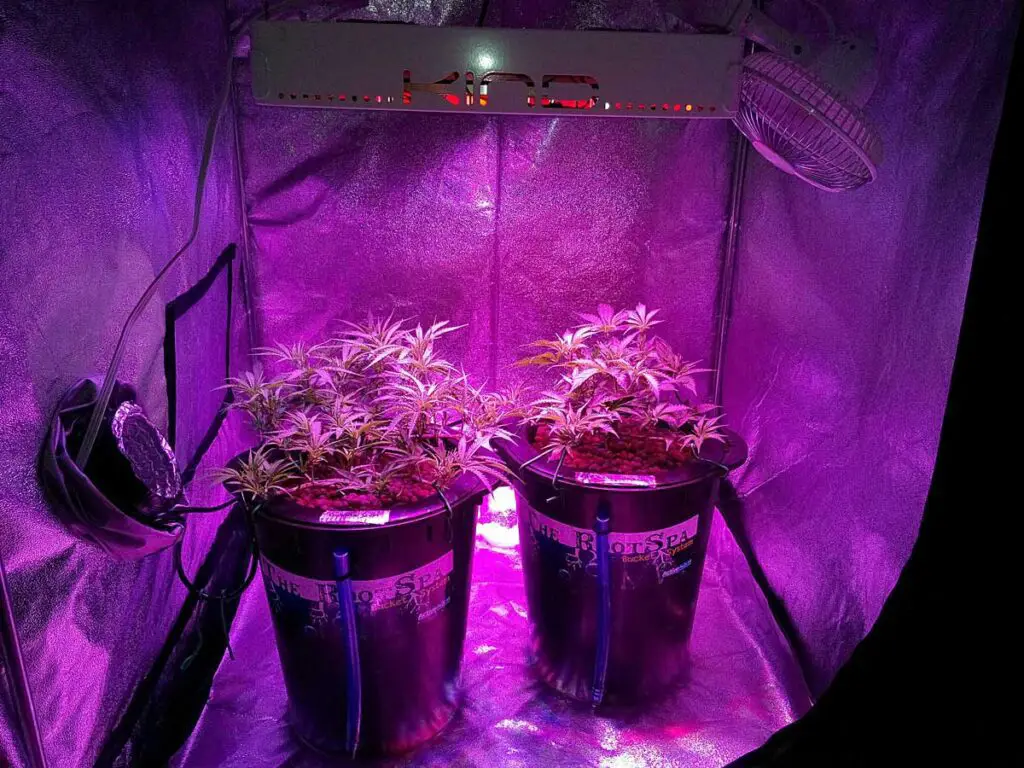
Monitoring the plants closely will help you determine if they are receiving too much or too little light. Signs of insufficient light include stunted growth, stretching, and pale leaves. On the other hand, if the plants exhibit signs of light burn, such as curling leaves or discoloration, it may indicate that the lights are placed too close.
Finding the optimal hanging height and placement for your LED grow lights requires careful observation and adjustment. Keep in mind that different plant species have varying light requirements, so it is important to research and understand the needs of your specific plants to ensure their successful growth and development in an indoor setting.
Comparing Different LED Grow Light Brands and Models
When it comes to comparing different LED grow light brands and models, there are several factors to consider. One of the most important factors is the spectrum of light that the LED grow light emits. Different plants have different light requirements, and the spectrum of light can greatly impact their growth and development. Look for LED grow lights that offer a full spectrum of light, including both blue and red wavelengths, as these are essential for photosynthesis. Additionally, some LED grow lights offer adjustable spectrums, allowing you to tailor the light output to the specific needs of your plants.
Another important consideration is the intensity of the LED grow light. Light intensity is usually measured in terms of PPFD (photosynthetic photon flux density), which measures the number of photons that reach a given area per second. Different plants have different light intensity requirements, so it’s important to choose an LED grow light that provides enough intensity for your specific plants. Some LED grow lights offer adjustable intensity levels, allowing you to increase or decrease the light output as needed. By selecting an LED grow light with the appropriate spectrum and intensity, you can provide your indoor plants with the optimal light conditions for healthy growth.
Understanding Wattage, Lumens, and PAR Values in LED Grow Lights
When it comes to understanding LED grow lights, it’s essential to familiarize yourself with three key factors: wattage, lumens, and PAR values. These measurements play a crucial role in determining the effectiveness and efficiency of LED grow lights for your indoor garden.
Wattage refers to the amount of electrical power consumed by the LED grow light. While it was once common to equate higher wattage with higher light intensity, advancements in technology have made it possible for LED grow lights to produce more light while consuming less power. This means that you can achieve the same level of light intensity with a lower wattage LED grow light, resulting in energy savings and reduced heat output.
Lumens, on the other hand, measure the total amount of visible light emitted by the LED grow light. While lumens can give you a general idea of a light’s brightness, they may not provide an accurate representation of its effectiveness for plant growth. This is where PAR values come into play. PAR, or photosynthetically active radiation, refers to the wavelengths of light that plants can use for photosynthesis. It specifically measures the amount of light within the range of 400 to 700 nanometers, which is essential for plant growth. When choosing an LED grow light, it’s crucial to consider its PAR output to ensure that your plants receive the optimal light spectrum for healthy growth and maximum productivity.
Evaluating the Lifespan and Energy Efficiency of LED Grow Lights
When evaluating the lifespan and energy efficiency of LED grow lights, it is important to consider the quality of the diodes used. LED lights are known for their long lifespan compared to traditional lighting options. On average, LED grow lights can last up to 50,000 to 100,000 hours, which is significantly longer than traditional light bulbs. This extended lifespan not only reduces the frequency of light replacements but also minimizes maintenance costs for indoor gardening enthusiasts.
Additionally, LED grow lights are highly energy efficient, making them a popular choice among indoor gardeners. Compared to traditional lighting options like fluorescent or incandescent bulbs, LED grow lights consume significantly less energy while still providing optimal light output for plant growth. This energy efficiency not only helps reduce electricity bills but also benefits the environment by reducing carbon emissions. Overall, the long lifespan and energy efficiency of LED grow lights make them a cost-effective and sustainable lighting solution for indoor gardening.
Maintenance and Care Tips for LED Grow Lights
Maintenance and care are essential to ensure the longevity and optimal performance of LED grow lights in indoor gardens. Here are some tips to help you keep your LED grow lights in top condition:
1. Cleaning: Regularly clean the surface of the LED grow lights to remove dust, dirt, and any other debris that may accumulate over time. Use a soft cloth dampened with water or a gentle cleaning solution, and wipe gently without applying excessive pressure. Avoid using abrasive materials or harsh chemicals that could damage the light fixtures.
2. Cooling and Ventilation: LED grow lights generate heat during operation, so it is crucial to provide adequate cooling and ventilation to prevent overheating. Ensure that the lights have sufficient airflow around them by maintaining proper spacing between plants and the lighting fixtures. Additionally, periodically check and clean any cooling fans or heat sinks to remove any dust build-up that could impede proper heat dissipation.
Proper maintenance not only extends the lifespan of your LED grow lights but also ensures consistent and efficient performance for optimal plant growth. By following these care tips, you can create a conducive environment for your indoor garden and enjoy successful cultivation throughout the growing season.
Real User Reviews: Insights from Indoor Growers Using LED Lights
Real user reviews provide invaluable insights into the effectiveness and practicality of LED grow lights for indoor gardening. Many indoor growers have experienced significant improvements in plant growth and overall yield after switching to LED lights. One user, whose specialty is growing herbs and leafy greens, stated, “I can confidently say that LED grow lights have revolutionized my indoor gardening. Not only do my plants look healthier and more vibrant, but I’ve also noticed an increase in the overall yield. With LED lights, I can achieve optimal growth in a smaller space, making it perfect for urban gardening.” This user’s feedback highlights one of the major advantages of using LED grow lights – their ability to provide targeted and efficient light for specific plant needs.
Another indoor gardener, who focuses on flowering plants and vegetables, shared their experience saying, “I initially had doubts about LED grow lights, but after seeing the results, I am a convert. Not only do the plants bloom beautifully, but the energy efficiency of LED lights is a major bonus. Compared to traditional lighting methods, I’ve noticed a significant reduction in energy consumption with LED lights, which not only saves money but also reduces my carbon footprint.” This feedback showcases the environmental benefits of LED grow lights, which are known for their energy efficiency and long lifespan.
Can LED grow lights be used for all types of indoor plants?
Yes, LED grow lights can be used for a wide range of indoor plants, including flowers, herbs, vegetables, and even trees.
Are LED grow lights more energy-efficient compared to other lighting options?
Yes, LED grow lights are known for their energy efficiency. They consume less electricity while providing optimal light for plant growth, making them more cost-effective in the long run.
How long do LED grow lights typically last?
On average, LED grow lights have a lifespan of 50,000 to 100,000 hours, depending on the brand and model. This longevity makes them a durable and reliable choice for indoor growers.
Can LED grow lights be used in small spaces or only in larger indoor gardens?
LED grow lights are suitable for both small and large indoor spaces. They come in various sizes and configurations, allowing growers to customize their lighting setup based on their specific needs.
Do LED grow lights emit a lot of heat?
LED grow lights produce significantly less heat compared to traditional grow lights, such as high-pressure sodium (HPS) or metal halide (MH) lights. This reduced heat emission helps maintain a stable temperature in the growing area.
Can LED grow lights be used for all stages of plant growth, from seedlings to flowering?
Yes, LED grow lights are designed to provide the full spectrum of light required for all stages of plant growth. They can be adjusted to different light intensity levels to meet the specific needs of each plant growth phase.
Are LED grow lights safe to use around children and pets?
LED grow lights are generally safe to use around children and pets. However, it is important to ensure that the lights are installed securely and out of reach to prevent any accidents or damage.
Can LED grow lights be used in conjunction with natural sunlight?
Yes, LED grow lights can be used in combination with natural sunlight. This can be particularly beneficial during the winter months or in areas with limited access to sunlight, ensuring consistent and adequate lighting for plant growth.
How often should LED grow lights be cleaned?
LED grow lights should be cleaned regularly to remove dust and debris that may accumulate on the surface. It is recommended to clean them every 2-3 months or as needed to maintain optimal performance.
Do LED grow lights require any special installation or electrical setup?
LED grow lights are typically easy to install and require a standard electrical setup. However, it is important to follow the manufacturer’s instructions and consult a professional if you are unsure about the installation process.

Pallavi Gupta is a burgeoning writer at SouthElMonteHydroponics, blending her passion for data analysis with a keen interest in biotechnology. Currently pursuing a Bachelor’s in Biotechnology at Amity University, Pallavi delves into the intricacies of life sciences while gaining hands-on experience in the exciting world of data analysis. Her unique background provides a fresh perspective on hydroponic farming, as she explores the intersection of biotechnology and sustainable agriculture. Through her writing, Pallavi aims to bridge the gap between data-driven insights and innovative farming practices, inspiring others to harness technology for a greener future.

